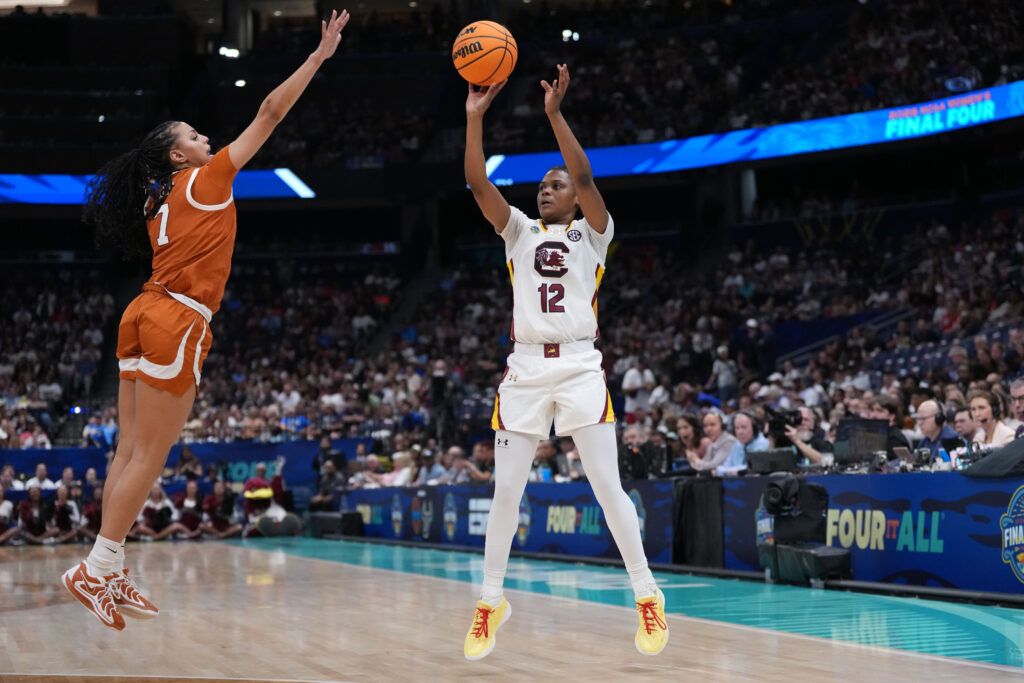MiLaysia Fulwiley was supposed to be the spark that ignited South Carolina’s championship run. Instead, she’s now wearing LSU purple, leaving Dawn Staley’s program searching for answers. The SEC Sixth Woman of the Year averaged 11.7 points per game over two seasons, but her departure to a rival might be exactly what the Gamecocks needed all along.
How Will MiLaysia Fulwiley’s Departure Transform South Carolina’s Playing Style?
The loss of Fulwiley forces South Carolina to take a completely different approach. Analysts suggest that losing a dynamic scorer like Fulwiley could ultimately benefit the team. The incoming players, Ta’Niya Latson and Medina Okot, bring a fundamentally different skill set, emphasizing team balance over individual brilliance.
Fulwiley’s highlight-generating style often took center stage, but Latson and Okot provide what coaches call “fundamentally sound basketball.” Their focus on defensive consistency and offensive versatility directly addresses two areas where South Carolina struggled in 2024-25.
The Gamecocks’ defensive efforts suffered from inconsistency, with sporadic breakdowns allowing opponents to seize momentum. Offensively, the team lacked sufficient scoring depth to overcome tight defenses during critical games.
Latson and Okot directly address these gaps. Their defensive capabilities promise steadier team defense, while their offensive skills bring multiple scoring threats, reducing pressure on any one player.
This represents a strategic roster shift from reliance on a singular, dynamic player to building a deeper, more balanced squad. Championship teams traditionally succeed through such depth, allowing them to maintain performance during grueling postseason runs where sustained excellence is key.
What Makes Ta’Niya Latson the Perfect Fulwiley Replacement?
Latson brings exactly what South Carolina needs moving forward. She averaged 4.6 assists per game in the 2024-25 season, showcasing elite playmaking alongside scoring ability. Her 45.5% field goal percentage makes her a reliable offensive threat.
Staley herself has praised Latson’s playmaking as a “superpower,” highlighting how her ability to create shots for herself and teammates will fill the backcourt void left by Fulwiley.
Beyond the numbers, Latson’s reunion with Raven Johnson creates instant chemistry. The former high school teammates won multiple state championships and a national title together, bringing proven success to the Gamecocks’ roster.
Although Latson may require an adjustment period to South Carolina’s defensive system, her leadership as a former Florida State co-captain and her clutch performances demonstrate the mental toughness needed to thrive in Staley’s program.
Can This Strategic Shift Finally Deliver a Championship?
While Fulwiley’s departure stings, analysts describe the team’s evolution as “addition through subtraction.” Trading individual stardom for team cohesion and consistency may be exactly what South Carolina needs to break through in postseason play.
The new roster prioritizes depth, defensive discipline, and diversified scoring, all hallmarks of championship teams. In recent years, South Carolina has fallen just short of its ultimate goal.
The transformation from highlight-dependent basketball to a fundamentally sound, balanced approach signals a strategic repositioning for deeper playoff runs and sustained success.
While fans may miss Fulwiley’s electrifying moments, the Gamecocks’ renewed emphasis on depth and cohesion could finally provide the edge needed to secure a national title.
Only time will tell if this new approach delivers, but the silver lining in losing MiLaysia Fulwiley is a team better equipped for the long haul. This Gamecock roster is built not just for flashes of brilliance but for championship resilience.

